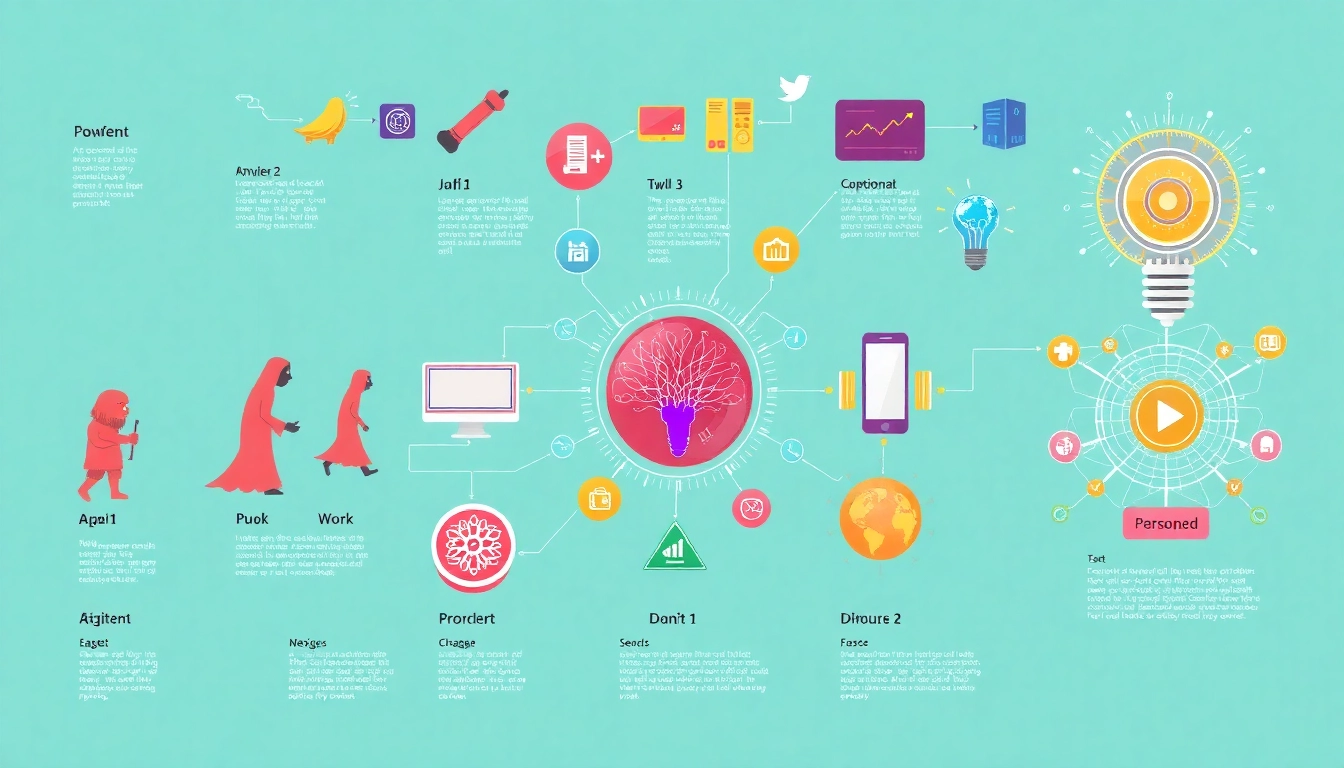In today’s rapidly evolving world, technology stands at the forefront of innovation, transforming every aspect of our lives. From the smartphones in our pockets to the complex systems powering industries, understanding what technology truly is and its profound impact is essential. This comprehensive guide explores the multifaceted nature of technology, its history, current trends, and what the future holds. Whether you’re a tech enthusiast, a professional, or simply curious, this article offers valuable insights into the dynamic landscape of technology.
1. What Is Technology? Definition, Significance, and Overview
1.1. Defining Technology: A Clear Explanation
Technology encompasses the tools, systems, and processes developed to solve problems, improve efficiency, and enhance human capabilities. At its core, it involves applying scientific knowledge for practical purposes. From simple tools like wheels to complex artificial intelligence (AI) systems, technology enables us to manipulate our environment to meet our needs. The Oxford Dictionary defines technology as “the application of scientific knowledge for practical purposes,” highlighting its role as a bridge between science and everyday life.
1.2. The Importance of Technology in Modern Life
Technology influences nearly every aspect of our daily routines—communication, transportation, healthcare, education, and entertainment. It accelerates economic growth, fosters innovation, and improves quality of life. For example, digital innovation has enabled remote work, online learning, and instant global communication. Moreover, technology drives sustainability efforts through renewable energy solutions and green innovations, shaping a more sustainable future.
1.3. Brief History of Technological Development
The evolution of technology traces back to prehistoric tools, with significant milestones such as the Agricultural Revolution, industrialization, and the digital age. The 20th century introduced computers, the internet, and mobile devices, revolutionizing how we communicate and work. Today, we witness rapid advancements in AI, blockchain, and IoT, indicating that technological progress continues to accelerate at an unprecedented pace.
2. Types of Technology: Categories and Examples
2.1. Information and Communication Technologies (ICT)
ICT includes computers, the internet, telecommunications, and digital media. These technologies facilitate instant communication, data sharing, and information access. Examples include smartphones, social media platforms, and cloud computing services. ICT is the backbone of the digital economy, enabling innovations like e-commerce and digital marketing.
2.2. Industrial and Manufacturing Technologies
This category involves automation, robotics, and manufacturing systems that enhance productivity and precision. Examples include CNC machines, industrial robots, and 3D printing. These technologies have revolutionized production processes, reducing costs and increasing customization.
2.3. Emerging Technologies: AI, Blockchain, and IoT
Emerging technologies are shaping the future of innovation. AI advancements are powering automation, data analysis, and personalized experiences. Blockchain technology offers secure, decentralized data management, underpinning cryptocurrencies like Bitcoin. IoT devices connect everyday objects to the internet, enabling smart homes, wearable health devices, and connected cities. Together, these technologies foster a new era of digital transformation.
3. How Technology Shapes Society and Economy
3.1. Impact on Education, Healthcare, and Daily Life
- Education: E-learning platforms, virtual classrooms, and AI tutors make education more accessible and personalized.
- Healthcare: Telemedicine, wearable health monitors, and AI diagnostics improve patient outcomes and streamline medical services.
- Daily Life: Smart assistants, online shopping, and digital banking simplify everyday tasks.
3.2. Economic Growth and Innovation
Technology drives economic development by creating new industries, jobs, and markets. For instance, the rise of the app economy and digital startups has generated millions of employment opportunities. Moreover, technological innovation fosters productivity and competitiveness on a global scale.
3.3. Challenges and Ethical Considerations
Despite its benefits, technology presents challenges such as data privacy concerns, cybersecurity threats, and ethical dilemmas surrounding AI and automation. Ensuring responsible development and usage is critical to maximizing benefits while minimizing risks.
4. Future of Technology: Trends and Predictions
4.1. Artificial Intelligence and Automation
AI advancements continue to evolve, enabling machines to perform tasks previously done by humans. Future trends include AI-powered healthcare diagnostics, autonomous vehicles, and intelligent personal assistants that anticipate user needs, transforming industries and daily life.
4.2. Sustainable and Green Technologies
As climate change concerns intensify, sustainable technologies like solar and wind energy, electric vehicles, and biodegradable materials are gaining prominence. Innovations in energy storage and smart grids aim to create a greener, more sustainable future.
4.3. The Role of Quantum Computing and Space Tech
Quantum computing promises exponential processing power, revolutionizing cryptography, drug discovery, and complex simulations. Space technology advancements, including satellite constellations and space exploration missions, will expand our understanding of the universe and enable new communication and navigation capabilities.
5. Frequently Asked Questions About Technology
Q1. How has technology evolved over time?
Technology has progressed from primitive tools to advanced digital systems, driven by scientific discoveries and societal needs. Key milestones include the invention of the wheel, printing press, electricity, computers, and the internet.
Q2. What are the most impactful current technologies?
Today, AI, blockchain, IoT, and renewable energy tech are among the most influential, shaping industries, economies, and lifestyles globally.
Q3. How will future innovations impact society?
Future innovations are expected to enhance connectivity, efficiency, and sustainability, but also pose challenges like automation’s impact on employment and ethical concerns about AI decision-making. Preparing for these changes is essential.
Q4. What are common challenges in technological development?
Challenges include high development costs, regulatory hurdles, cybersecurity threats, and ethical dilemmas, all requiring careful management to ensure responsible innovation.
Q5. How can individuals stay updated with tech trends?
- Follow reputable tech news sources like TechDee.
- Subscribe to industry newsletters and blogs.
- Participate in webinars, conferences, and online courses.
- Engage with professional networks and social media groups dedicated to technology.
- Experiment with new tools and platforms to gain hands-on experience.
Conclusion: Embracing the Future of Technology
Technology continues to evolve at an astonishing rate, shaping the way we live, work, and interact. Staying informed about the latest trends—such as digital innovation, AI advancements, blockchain, IoT devices, and sustainable technologies—is crucial for individuals and organizations alike. By understanding the history, current landscape, and future directions, you can better navigate the opportunities and challenges ahead. Embrace technological change responsibly, and harness its power to create a more connected, efficient, and sustainable world.



